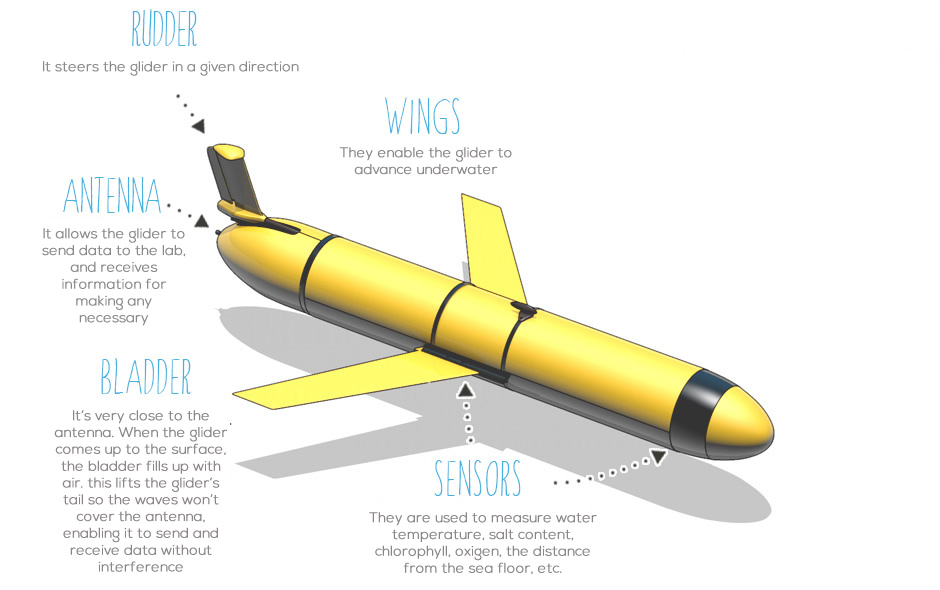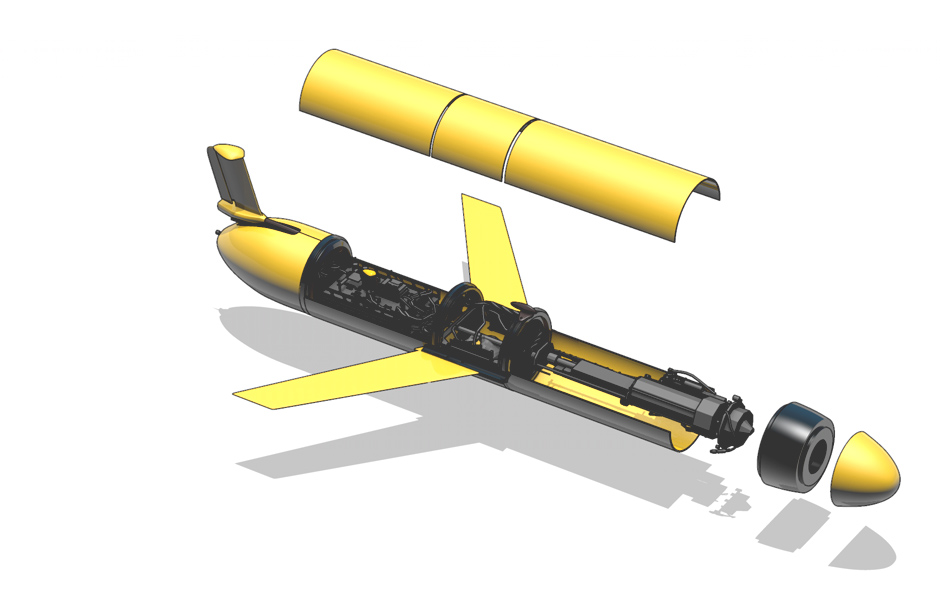WHAT IS A GLIDER?
Underwater gliders are autonomous vehicles which are revolutionising oceanographic research today since they make it possible to monitor the sea state in real time. Gliders are equipped with sensors to gain information about physicochemical parameters form the seawater. Gliders are capable of collecting data relating to conductivity, temperature, depth, chlorophyll and oxygen via their sensors over long periods.
AN UNDERWATER DRONE TAKING THE OCEAN’S PULSE IN REAL TIME
Gliders have become great allies for researchers because their main advantage is that they complete missions autonomously with durations of weeks, or months, so that data about marine currents can be collected at a much higher resolution, in real time and at a lower cost than surveys carried out by ocean research vessels. It is a monitoring system which works continuously even in extreme conditions. Another big advantage is that they can explore without the need for an engine or propeller and they consume very little energy.











